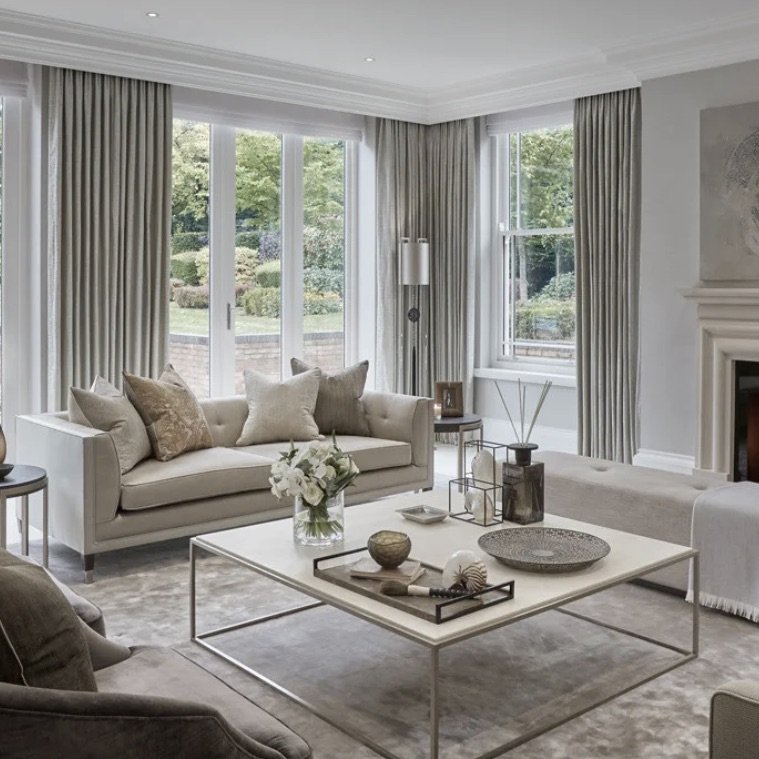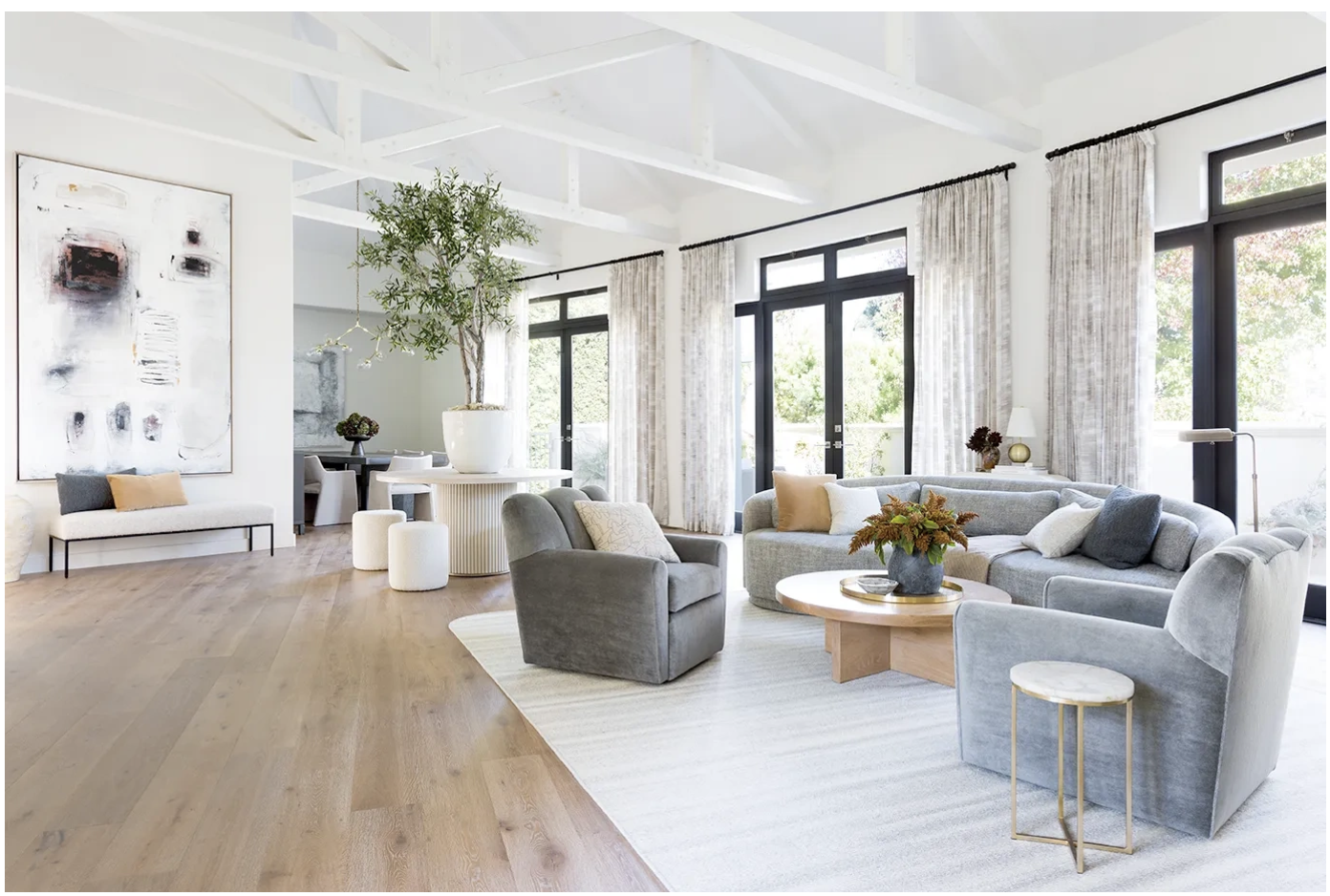TRANSITIONAL STYLE
Jo Sarno, 22nd October 2024
Transitional style seamlessly blends traditional and contemporary design elements to create spaces that feel warm, inviting, and timeless. This approach is all about striking the perfect balance between classic sophistication and modern simplicity, resulting in a space that’s comfortable, cohesive, and stylish in a subtly elegant way. Transitional-style living rooms, in particular, exude a welcoming charm without being overly formal, making them a popular choice for homeowners who want a versatile, approachable look.
From furniture selection to wall color, rugs, lighting, and textures, every detail in a transitional living room is thoughtfully chosen to create harmony. Neutral tones often serve as the backdrop, allowing key pieces like a statement chandelier or layered textiles to add depth and character. The use of soft fabrics, sleek lines, and traditional accents—like a tufted sofa or wooden coffee table—creates a space that feels both polished and lived-in.
Designing a transitional living room is an excellent option for those who want a timeless, crowd-pleasing aesthetic that works with a variety of tastes and budgets. Whether you’re leaning towards classic elegance or modern minimalism, transitional design offers the flexibility to create a space that feels both fresh and enduring. Below are a few tricks that can be used to create this look.
Add or restore Architectural Details
In period properties, restoring original details is an excellent starting point. Consider reinstating features like fireplaces or plasterwork that align with the home’s era, whether through original pieces or high-quality reproductions. To enhance a transitional living room without architectural elements such as cornices, wainscoting, or moldings, add decorative touches of your own. In this example, a contemporary coffered ceiling and a detailed fireplace surround introduce a sense of grandeur and elegance, instantly transforming the space with a refined, elevated aesthetic.
Ceiling-Height Curtains
Ceiling-height curtains,, can enhance a transitional style aesthetic in a home by adding elegance and sophistication while maintaining a clean, streamlined look. These curtains emphasize vertical lines, making the space feel taller and more open. Their simple, tailored appearance fits well with the understated elegance typical of transitional spaces, while fabric choice and texture can offer a subtle nod to traditional design without overpowering the modern touches.
ADD CURVES
Transitional living rooms embrace curves in the design because they provide a balance between the clean, straight lines of modern aesthetics and the more intricate, softer forms of traditional styles. Curved furniture or architectural elements, such as rounded armchairs, sofas, or circular decor, introduce a sense of fluidity and warmth, softening the overall look of the room. This creates a more inviting and comfortable atmosphere while maintaining the sophisticated and streamlined feel of the transitional style. By blending curves with sharper, modern elements, transitional design achieves its signature balance of elegance and simplicity.
Mix Traditional and Modern Furniture
In a transitional living room, blending classic pieces like a tufted sofa or traditional coffee table with sleek, modern furniture strikes the ideal balance between old and new. You can also incorporate furniture that recalls classic designs but is updated for modern comfort. This approach combines the timeless elegance of traditional forms with contemporary innovations like ergonomic features and high-performance fabrics. For example, the wingback chairs shown here retain their classic charm while offering modern comfort, making them perfect for a transitional space that prioritizes both style and functionality.




